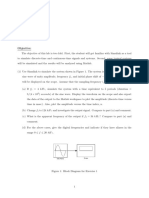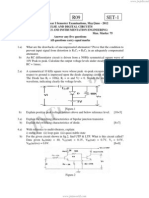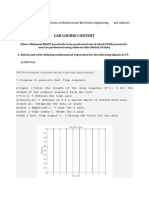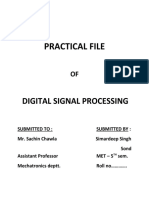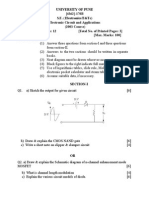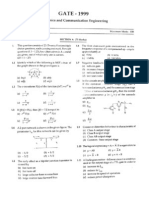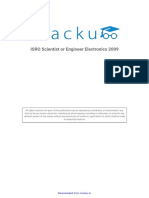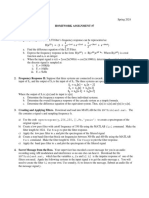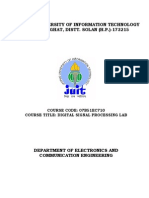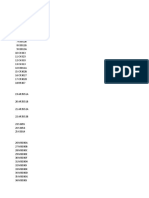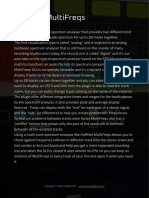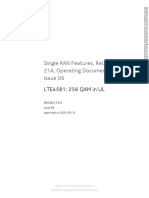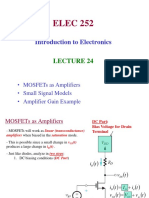0% found this document useful (0 votes)
7 views25 pagesComputing Software Lab
The document outlines various electronic circuit designs and simulations using PSPICE, MATLAB, and SIMULINK, including rectifiers, filters, and amplifiers. It also includes programming tasks for generating different waveforms and signals, as well as demonstrating logic gate operations using LABVIEW. The focus is on practical applications in instrumentation and electronics engineering for students at Jadavpur University.
Uploaded by
kuntalgoswami.k123Copyright
© © All Rights Reserved
We take content rights seriously. If you suspect this is your content, claim it here.
Available Formats
Download as DOCX, PDF, TXT or read online on Scribd
0% found this document useful (0 votes)
7 views25 pagesComputing Software Lab
The document outlines various electronic circuit designs and simulations using PSPICE, MATLAB, and SIMULINK, including rectifiers, filters, and amplifiers. It also includes programming tasks for generating different waveforms and signals, as well as demonstrating logic gate operations using LABVIEW. The focus is on practical applications in instrumentation and electronics engineering for students at Jadavpur University.
Uploaded by
kuntalgoswami.k123Copyright
© © All Rights Reserved
We take content rights seriously. If you suspect this is your content, claim it here.
Available Formats
Download as DOCX, PDF, TXT or read online on Scribd
/ 25
